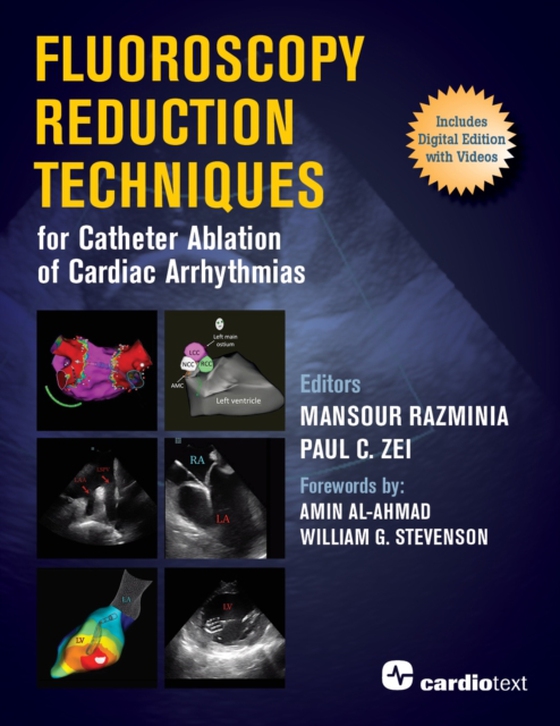
Fluoroscopy Reduction Techniques for Catheter Ablation of Cardiac Arrhythmias e-bog
875,33 DKK
(inkl. moms 1094,16 DKK)
Background:Catheter ablation has become a widely used approach to treating various cardiac arrhythmias. Traditionally, catheter ablation procedures are guided by fluoroscopic imaging to help understand catheter position during mapping. The potentially significant exposure to radiation to the patient, physician, and staff increases risks of radiation exposure-related disease. Also, the protectiv...
E-bog
875,33 DKK
Forlag
Cardiotext Publishing
Udgivet
1 maj 2019
Genrer
Cardiovascular medicine
Sprog
English
Format
pdf
Beskyttelse
LCP
ISBN
9781942909354
Background:Catheter ablation has become a widely used approach to treating various cardiac arrhythmias. Traditionally, catheter ablation procedures are guided by fluoroscopic imaging to help understand catheter position during mapping. The potentially significant exposure to radiation to the patient, physician, and staff increases risks of radiation exposure-related disease. Also, the protective lead garments worn increases risks of orthopedic injury. Current advanced electroanatomic mapping and intracardiac echocardiography technology have allowed the development of endocardial catheter ablation techniques without the use of fluoroscopy safely and effectively. A host of expert and experienced authors present a practical overview of the rationale and methodology for a low- or zero-fluoro environment in the electrophysiology lab with the critical goal of significantly reducing radiation exposure to the patient, physician, and staff. This practical guide: Covers the entire spectrum of commonly (and less commonly) performed ablation procedures via endocardial approach. Discusses general principles that are applicable across ICE and EAM platforms. Will assist the electrophysiologist and their team to safely and effectively work toward the significant reduction in fluoroscopy utilization while also likely improving procedural safety, i.e., fewer complications, after the adoption of these techniques. Includes a library of 50 videos, with 9 extended films (108 minutes) by Dr. Razminia detailing step-by-step procedures and techniques.
 Dansk
Dansk

